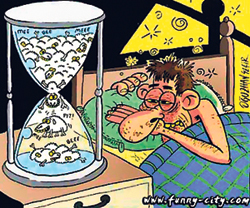The long‑term athletic development model consists of several key stages that span over twenty years. The number of stages is dependant on the sport or activity that is chosen, and is unique to early specialization or late specialization. This model is also based on the biological age (age of physical development), not chronological age (calendar age) of children. As you may already know, all children develop at different rates regardless of their chronological age; hence, the popular phrase, “my child is a late bloomer.”
I am a firm believer of late specialization, given the exception of a few early specialization activities, such as gymnastics, swimming, diving, dancing, and figure skating. However, children pursuing these activities should also be exposed to other forms of physical activity to further their movement skill development. Some major concerns with early specialization before the biological age of 11 and 12, in females and males respectfully are; deficits in movement skills, overuse injuries, early burnout, and sport dropout. Team sports, such as hockey, should use the late specialization sport model. An example of this model follows.
Stage 1: FUNdamental
Biological age: Females 6-9 / Males 6-10 years
The FUNdamental stage is one of importance. At this stage, children should be participating in a wide range of activities and sports for the purpose of having fun and developing basic movement intelligence (repertoire of movement developed since birth). Emphasis should be placed on fun, as enjoyment will lead to long-term adherence to physical activity; furthering athletic development. Exposing children to different terrains (land, water, snow and ice) uncovers a variety of activities and sports that they may wish to pursue later in life, while presently enabling them to develop a broad foundation of essential fundamental movement skills.
The fundamental movement skills, the building blocks for all types of sport and physical activity, should be developed in this stage. These skills include: Agility, Balance, Co-ordination and Speed (ABCs); Catching, Passing, Kicking, and Striking (CPKs); Running, Jumping, Throwing, and Skipping (RJTs); as well as gliding and buoyancy. Along with these skills, children will begin to grasp simple rules and proper etiquette through structured sports and activities. A minimum of 6 to 7 hours a week is required to continue the development of early movement intelligence in children at this stage.
Stage 2: Learning to/and Training to Train
Biological age: Females 10-13 / Males 11-14
The Learning to/and Training to Train stage encompasses one of the most important periods of motor skill development in children. Children from the ages of 10‑11 and 11‑12, in females and males respectfully, are developmentally ready to acquire general sports skills. These skills are the foundation for all athletic development. Ready to acquire these skills, children should be exposed to a broad range of activities, and play at least two or three different sports. Exposure to these activities and sports will allow children to readily adopt motor coordination. If for some reason these fundamental motor skills are not developed between these ages, a significant window of opportunity will be lost, compromising the ability for these children to reach their full athletic potential.
At mid-stage, athletes should begin to focus on two sports of interest, as a commitment of 10-14 hours a week will be required. During this time, athletes should begin to develop strength and individual sport‑specific skills. Strength training should be introduced using plyometric (body resistant) exercises, because bones, ligaments, tendons and muscles are still developing. Emphasis should also be placed on stretching, as flexibility is crucial in preventing injuries in developing bodies. Along with the introduction to training, athletes will begin to understand the importance of proper nutrition and mental preparation.
Toward the end of the stage, athletes should be introduced to proper weight training techniques. These techniques will be important in furthering strength development in the later stages of athletic development.
Stage 3: Training to Compete
Biological age: Females 14-18 / Males 15-19
The Training to Compete stage should focus on increasing overall performance. This is accomplished by further developing sport-specific skills and positional tactics, psychological sport preparation, as well as optimizing fitness.
Fitness programs, tailor-made to the strengths and weaknesses of athletes, will round the development of athletic ability. Part of the fitness program should include training for maximal strength, as strength plays a critical role is all sports and competition. Strength training should be carried out through the use of free weights (dumbbells, barbells and kettlebells), as free weights enable the body to exercise through a full range of motion. A minimum time investment of 20 hours a week is required at this stage and focus should predominantly be on one sport.
Stage 4: Training to Win
Biological age: Females 19+ / Males 20+
The final, Training to Win, stage of elite athlete development focuses on achieving high-level performances in their specified sport. At this point, athletes have established physical, technical, tactical, and mental abilities; however, to maintain this level of performance, high intensity training must be continued at a relatively high volume. Training should include the improvement of general and sport-specific strength and endurance, and sport-specific skill refinement. A time investment of 20-30 hours a week is required at this stage.
The realization of committing to this model is that elite athletes will ultimately be developed. However, from an alternative perspective, the experience acquired can generate future career opportunities, while providing individuals with life-long skills that can transfer to healthy and active living.















